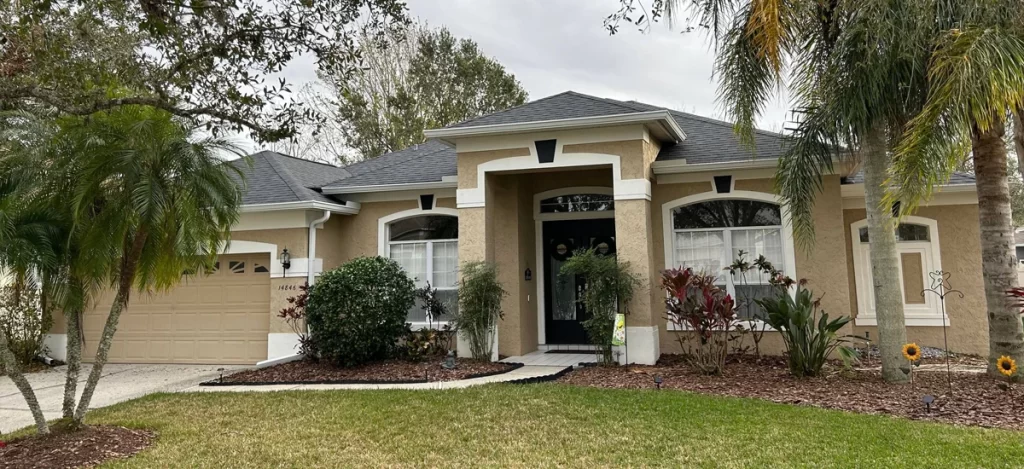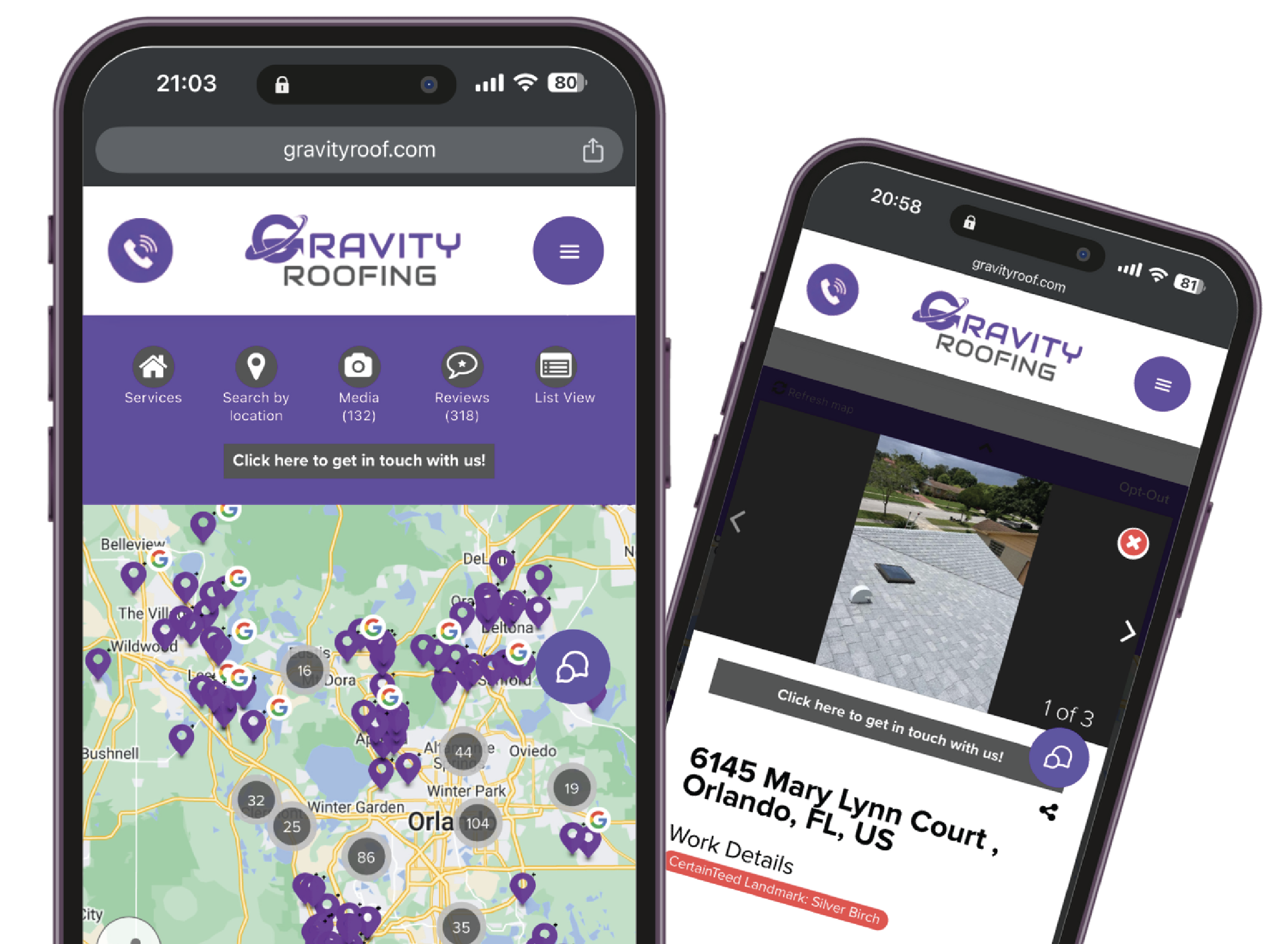Preparing Your Roof for Winter After a Storm Season
Introduction
Winter is a season that demands special attention to home maintenance, particularly when it comes to the roof. After enduring a storm season, it’s crucial to ensure that your roof is prepared to withstand the harsh winter elements. The significance of roof maintenance cannot be overstated, as it protects the structural integrity of your home and ensures the safety and comfort of its inhabitants.
Importance of Roof Maintenance
Regular roof maintenance, especially after a storm season, is essential for several reasons. It helps in identifying and addressing potential problems before they escalate into major issues. This proactive approach not only extends the life of your roof but also saves you money in the long run by avoiding costly repairs. Additionally, a well-maintained roof enhances the energy efficiency of your home, reducing heating costs during the winter months.
Assessing Roof Damage
Before diving into specific repairs, it’s important to conduct a thorough assessment of any damage your roof may have sustained during the storm season. Common storm-induced damages include missing or broken shingles, damaged flashing, and clogged gutters. Identifying these issues early on is the first step towards effective roof preparation for winter.
Common Storm-Induced Damages
Storms can cause various types of damage to a roof. High winds might tear off shingles, while heavy rains can lead to leaks and water damage. Hail can create dents or cracks in roofing materials, compromising their protective capabilities. Additionally, debris such as branches can cause physical damage to the roof surface, gutters, and downspouts.
Inspecting for Leaks
Leaks are a major concern when it comes to roof health, particularly as winter approaches. Water intrusion can lead to mold growth, structural damage, and increased heating costs. It’s important to identify leak sources promptly to mitigate these risks.
Identifying Leak Sources
To locate leaks, start by inspecting the attic for signs of water stains, mold, or damp insulation. Outside, look for damaged or missing shingles, cracked flashing, and clogged gutters. If you suspect a leak but can’t find the source, consider using a hose to simulate rainfall and pinpoint the entry point.
Clearing Debris
Removing debris from your roof and gutters is a crucial step in preparing for winter. Accumulated debris can trap moisture, leading to mold growth and structural damage. Moreover, it can block proper drainage, causing water to pool and potentially leak into your home.
Safe Debris Removal Practices
When clearing debris, prioritize safety. Use a sturdy ladder and ensure you have a stable footing. Wear gloves to protect your hands and consider using a roof rake or leaf blower to remove debris without damaging the shingles. For larger debris, such as fallen branches, you might need to enlist professional help.
Repairing Shingles
Shingles are your roof’s first line of defense against the elements. Damaged or missing shingles should be replaced promptly to maintain the roof’s integrity and prevent leaks.
Shingle Replacement Techniques
To replace shingles, start by removing the damaged ones using a flat pry bar. Slide the new shingle into place, securing it with roofing nails. Ensure the nails are covered with roofing cement to prevent water intrusion. It’s also a good idea to have a few spare shingles on hand for future repairs.
Securing Flashing
Flashing, the metal strips that seal joints and edges on your roof, is critical for preventing water penetration. Ensuring its integrity is essential for winter preparation.
Ensuring Flashing Integrity
Inspect flashing around chimneys, vents, and skylights for signs of rust, cracks, or loose edges. Repair minor issues with roofing cement, and replace severely damaged flashing to ensure a watertight seal. Properly secured flashing can prevent leaks and extend the lifespan of your roof.
Checking Gutters and Downspouts
Gutters and downspouts play a vital role in directing water away from your roof and home. Ensuring they are clean and functioning properly is crucial for winter readiness.
Importance of Proper Drainage
Clogged gutters can lead to water pooling on your roof, increasing the risk of leaks and ice dams. Regularly clean your gutters and downspouts, and consider installing gutter guards to minimize debris buildup. Proper drainage helps protect your roof and foundation from water damage.
Trimming Overhanging Branches
Overhanging branches pose a significant risk to your roof, especially during winter storms. Trimming them back can prevent potential damage and reduce maintenance needs.
Reducing Risk from Trees
Trim branches that extend over your roof to prevent them from breaking off and causing damage during storms. Additionally, removing overhanging branches reduces the accumulation of leaves and debris on your roof and gutters, making maintenance easier and more effective.
Insulating Attic Spaces
Proper attic insulation is essential for maintaining a consistent indoor temperature and preventing heat loss through the roof. It also helps prevent ice dams, which can cause significant damage to your roof.
Benefits of Proper Insulation
Adequate insulation keeps your home warm during winter, reducing heating costs and increasing comfort. It also prevents warm air from escaping through the roof, which can melt snow and create ice dams. Ensure your attic is well-insulated, and consider adding additional insulation if necessary.
Ventilation Maintenance
Proper ventilation is crucial for maintaining the health of your roof and preventing moisture buildup in the attic. It helps regulate temperature and reduces the risk of mold and mildew growth.
Ensuring Adequate Roof Ventilation
Check your roof’s ventilation system to ensure it is functioning properly. Clear any obstructions from vents and consider installing additional vents if needed. Proper ventilation helps extend the lifespan of your roof and prevents costly repairs.
Professional Roof Inspection
While DIY maintenance is important, a professional roof inspection can identify issues that may not be visible to the untrained eye. It’s advisable to schedule an inspection after storm season to ensure your roof is in top condition for winter.
When to Call an Expert
Consider calling a professional if you notice significant damage, such as large areas of missing shingles, extensive leaks, or structural issues. A professional can provide a comprehensive assessment and recommend necessary repairs to ensure your roof is winter-ready.
Preparing an Emergency Kit
Having an emergency kit on hand can help you address minor roof repairs quickly and efficiently. It should include essential tools and materials for immediate fixes.
Essential Roof Repair Tools
Your emergency kit should contain a hammer, roofing nails, roofing cement, spare shingles, a utility knife, a tarp, and a ladder. These tools and materials can help you perform temporary repairs and prevent further damage until professional help is available.
Documenting Repairs
Keeping a record of all repairs and maintenance activities is important for several reasons. It helps track the condition of your roof and provides valuable information for insurance claims and future repairs.
Importance of Maintenance Records
Document the date, type of repair, and any observations made during inspections. This record can help you stay organized and ensure that all necessary maintenance tasks are completed in a timely manner. It also provides proof of maintenance for warranty and insurance purposes.
Long-term Maintenance Plan
Developing a long-term maintenance plan for your roof ensures it remains in good condition year-round. Regular inspections and timely repairs can prevent major issues and extend the lifespan of your roof.
Developing a Seasonal Roof Care Schedule
Create a schedule that includes regular inspections and maintenance tasks for each season. This proactive approach helps address potential issues before they become major problems and ensures your roof is always prepared for the elements.
Understanding Roof Warranty
Knowing the details of your roof warranty can save you money and stress when repairs are needed. It’s important to understand what is covered and any conditions that may void the warranty.
Checking Warranty Details
Review your roof warranty to understand the coverage and any maintenance requirements. Ensure that all repairs and maintenance activities comply with the warranty conditions to avoid voiding the coverage.
Insurance Considerations
Homeowner’s insurance can provide financial protection for roof repairs and replacements. Reviewing your policy and understanding its coverage is essential for managing potential costs.
Reviewing Homeowner’s Insurance Policies
Check your insurance policy to see what types of roof damage are covered and any deductibles that apply. Consider updating your policy if necessary to ensure adequate protection for your roof.
Selecting Durable Materials
Choosing high-quality, durable materials for roof repairs can enhance the longevity and performance of your roof, especially in harsh winter conditions.
Best Materials for Winter Durability
Select roofing materials that are designed to withstand extreme weather conditions. Asphalt shingles, metal roofing, and synthetic materials are popular choices for their durability and resistance to winter elements.
DIY vs. Professional Repairs
Deciding whether to handle roof repairs yourself or hire a professional depends on the extent of the damage and your level of expertise. Weighing the pros and cons of each option can help you make an informed decision.
Weighing Your Options
DIY repairs can save money but may not be suitable for extensive damage or complex issues. Professional repairs ensure high-quality work and peace of mind but come at a higher cost. Consider the severity of the damage and your comfort level with DIY projects before making a decision.
Energy Efficiency Tips
Improving the energy efficiency of your roof can reduce heating costs and enhance indoor comfort during winter. Simple adjustments and upgrades can make a significant difference.
Improving Roof Energy Efficiency
Consider installing energy-efficient roofing materials, adding insulation, and ensuring proper ventilation. These measures help maintain a consistent indoor temperature and reduce energy consumption.
Importance of Regular Inspections
Regular roof inspections are crucial for identifying and addressing potential issues before they become major problems. They help ensure your roof remains in good condition year-round.
Scheduling Routine Checks
Plan to inspect your roof at least twice a year, in spring and fall, and after major storms. Regular inspections help catch small issues early, preventing costly repairs and extending the lifespan of your roof.
Utilizing Technology
Technology can simplify roof maintenance and make it easier to track repairs and inspections. Various apps and tools are available to assist with roof care.
Roof Maintenance Apps and Tools
Use roof maintenance apps to schedule inspections, track repairs, and receive reminders for routine maintenance tasks. These tools help you stay organized and ensure your roof remains in good condition.
Budgeting for Repairs
Planning financially for roof repairs can help you manage costs and avoid financial strain. Setting aside funds for maintenance and unexpected repairs is a prudent approach.
Planning Financially for Roof Care
Create a budget for roof maintenance that includes regular inspections, minor repairs, and a contingency fund for emergency repairs. This proactive approach helps ensure you have the resources to address roof issues promptly.
Preparing for Future Storms
Building resilience into your roof can help it withstand future storms and minimize damage. Implementing preventative measures is key to long-term roof health.
Building Resilience into Your Roof
Consider reinforcing your roof with impact-resistant materials, securing loose shingles, and trimming overhanging branches. These measures can help your roof endure future storms with minimal damage.
Community Resources
Leveraging local resources can provide additional support for roof maintenance and repairs. Community programs and services can offer valuable assistance.
Leveraging Local Assistance Programs
Explore local assistance programs that offer financial aid, professional services, and educational resources for homeowners. These programs can help you maintain your roof and address repairs effectively.
Environmental Considerations
Eco-friendly roof maintenance practices can reduce your environmental impact and contribute to a healthier planet. Consider sustainable options when caring for your roof.
Eco-friendly Roof Maintenance
Use environmentally friendly roofing materials, practice proper disposal of old materials, and consider installing green roofs or solar panels. These practices promote sustainability and reduce your carbon footprint.
Case Studies
Learning from real-life scenarios can provide valuable insights into effective roof maintenance strategies. Case studies highlight successful approaches and common pitfalls.
Learning from Real-life Scenarios
Review case studies of homeowners who successfully maintained their roofs after storm seasons. Analyze their approaches, challenges, and outcomes to apply similar strategies to your roof care routine.
Safety Precautions
Ensuring safety during roof repairs and maintenance is paramount. Taking appropriate precautions can prevent accidents and injuries.
Ensuring Safety During Repairs
Use proper safety gear, such as gloves, safety glasses, and non-slip shoes. Secure your ladder, work with a partner, and avoid working on the roof during adverse weather conditions. Safety should always be your top priority.
Legal Aspects
Understanding local building codes and regulations is important for compliant and safe roof repairs. Adhering to these standards ensures your roof meets legal requirements.
Understanding Local Building Codes
Familiarize yourself with local building codes and regulations related to roof repairs and maintenance. Ensure all work complies with these standards to avoid legal issues and ensure safety.
Summary
Preparing your roof for winter after a storm season is a comprehensive process that involves thorough inspections, timely repairs, and preventative measures. By taking these steps, you can ensure your roof remains in good condition, protecting your home and providing peace of mind throughout the winter months. Remember, regular maintenance and proactive care are the keys to a durable and resilient roof.
FAQs
What are the first steps to take when preparing your roof for winter?
The first steps include assessing any damage sustained during the storm season, inspecting for leaks, and clearing debris from the roof and gutters. These initial actions set the stage for more detailed repairs and maintenance.
How often should I inspect my roof for damage?
It’s recommended to inspect your roof at least twice a year, in spring and fall, and after major storms. Regular inspections help identify potential issues early, preventing costly repairs.
Can I handle roof repairs myself, or should I hire a professional?
The decision depends on the extent of the damage and your level of expertise. Minor repairs can often be handled as DIY projects, but significant damage or complex issues should be addressed by a professional.
What materials are best for winter-proofing my roof?
Durable materials such as asphalt shingles, metal roofing, and synthetic materials are excellent choices for winter-proofing. These materials are designed to withstand harsh weather conditions and provide long-lasting protection.
How can I improve my roof’s energy efficiency?
Improving energy efficiency involves installing energy-efficient roofing materials, adding insulation, and ensuring proper ventilation. These measures help maintain a consistent indoor temperature and reduce energy consumption.
Why is professional roof inspection important after a storm season?
A professional roof inspection can identify hidden issues that may not be visible to the untrained eye. Professionals have the expertise to assess the roof’s condition accurately and recommend necessary repairs to ensure winter readiness.














